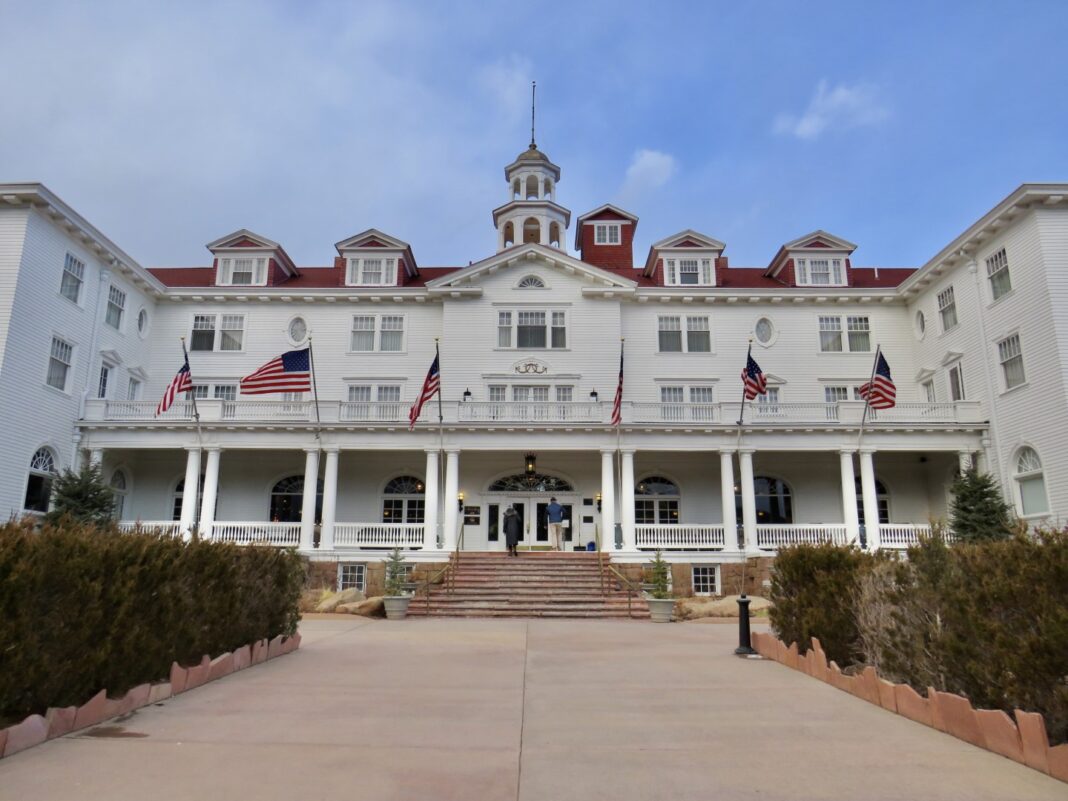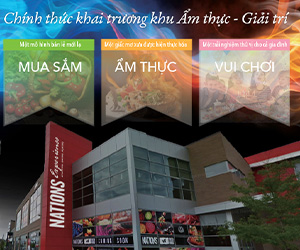Text and photos: Maureen Littlejohn
Denver is known for being a forward-thinking, eco-friendly city. But on a recent trip, I found that it’s also culturally rich with galleries and museums that take a hard look at the past and a wide-eyed blink at the future.
My first stop was at the Colorado History Center, just down the street from the State Capitol building. Here I encountered stories and artifacts from the state’s early days. An exhibit called Sand Creek Massacre The Betrayal that Changed Cheyenne and Arapaho People Forever was especially sobering. It told the story of an attack in 1864, approved by Colorado Territory governor John Evans, on 230 women, children, and elderly Cheyenne and Arapaho people by the United States Army. They had been told they would be safe and had raised an American and a white flag over one of their teepees. Even so, soldiers slaughtered those in the defenseless camp and desecrated their bodies. The unflinching account chilled me to my core, giving me perspective on an aspect of Colorado’s Indian Wars that was never covered in my history classes.
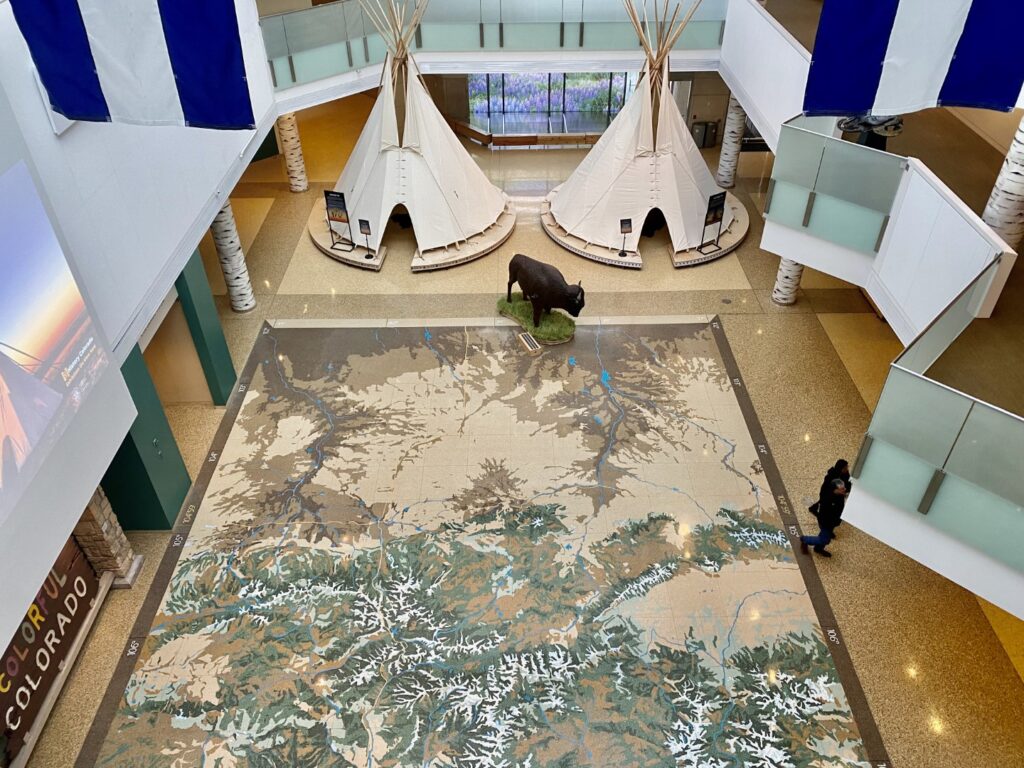
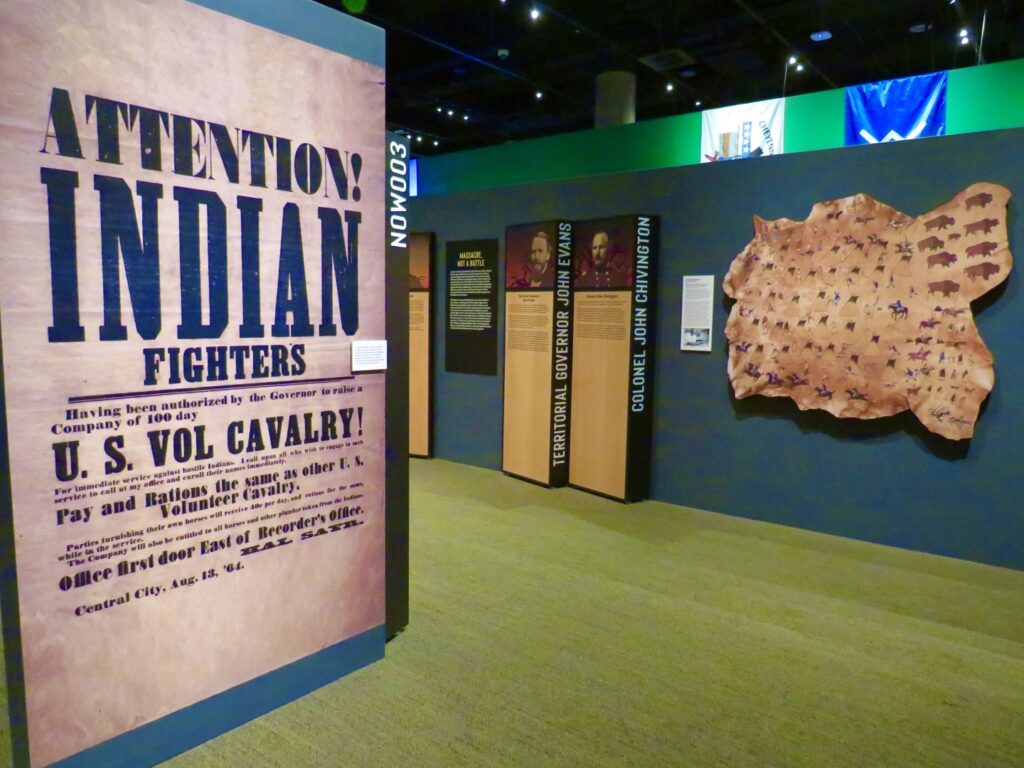
The center was also a place for visitors to get a handle on Colorado’s positive past. Of special interest to me was an exhibit called Colorado Firsts which included the story of electric engineer D.D. Sturgeon who invented colored Christmas lights. The story goes that in 1914, to cheer up his ill grandson, Sturgeon dipped some cheap lights in red and green paint, strung them together, and hung them in the yard where the boy could see them from his bed. The Sturgeon Electric Company honors this legacy today by decorating the home of a different patient “ambassador” from Children’s Hospital Colorado every Christmas.
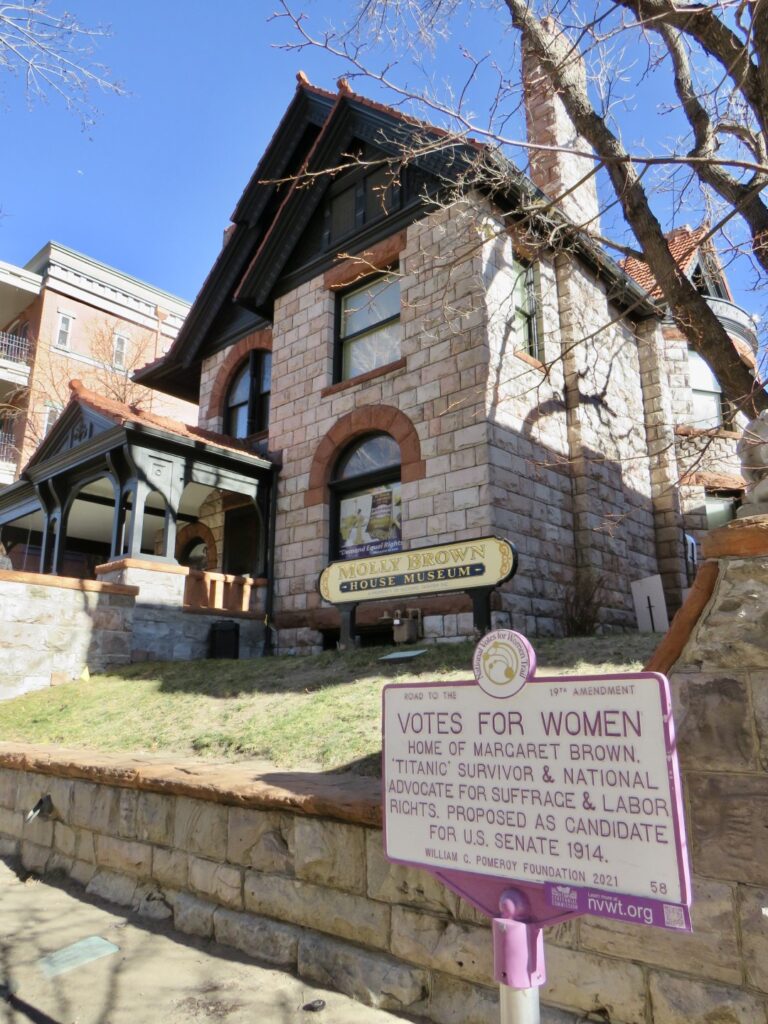
A fascinating figure from Denver’s colorful past is The “Unsinkable” Margaret or “Molly” Brown. A famous survivor of the Titanic, she was married to J.J. Brown when she was young and he was a struggling mining engineer. The couple met and married in Leadville, Co. Later, Brown became a primary shareholder in a mine that struck gold. He and Margaret became millionaires and moved to Denver.
The Molly Brown House Museum was a fascinating glimpse into her life as a charity activist, Titanic survivor, and world traveler.
For a glimpse of the character, history, and rugged landscapes that intrigued Americans starting in the early 1800s, I headed to the American Museum of Western Art: The Anschutz Collection. Located in the grand Navarre Building, across the street from the venerable Brown Palace hotel, it was jam-packed with paintings that depicted the lives of Native Americans and settlers as the West was opening up. I learned later that the building had originally been a girls’ school, and later had iterations as a gambling hall, bordello, restaurant, and jazz club. In the 1990s it became home to the collection it now displays.

Modern art is one of the main draws at the Denver Art Museum, which is housed in an arresting, geometric building designed by architect Daniel Libeskind. There were numerous galleries to explore, including those that featured Indigenous Arts of North America, 19th Century European Art, and Latin American Art. The special exhibits are always changing and I was lucky to catch the outstanding Souls of Black Folks by Ghanaian artist Amoako Boafo.
Keeping with the modern theme, the Museum of Contemporary Art was also on my list to visit. The slick, streamlined building, opened in 2007. Filled with natural light, the building’s five galleries had no permanent exhibits, but I learned that art shows rotate every few months.
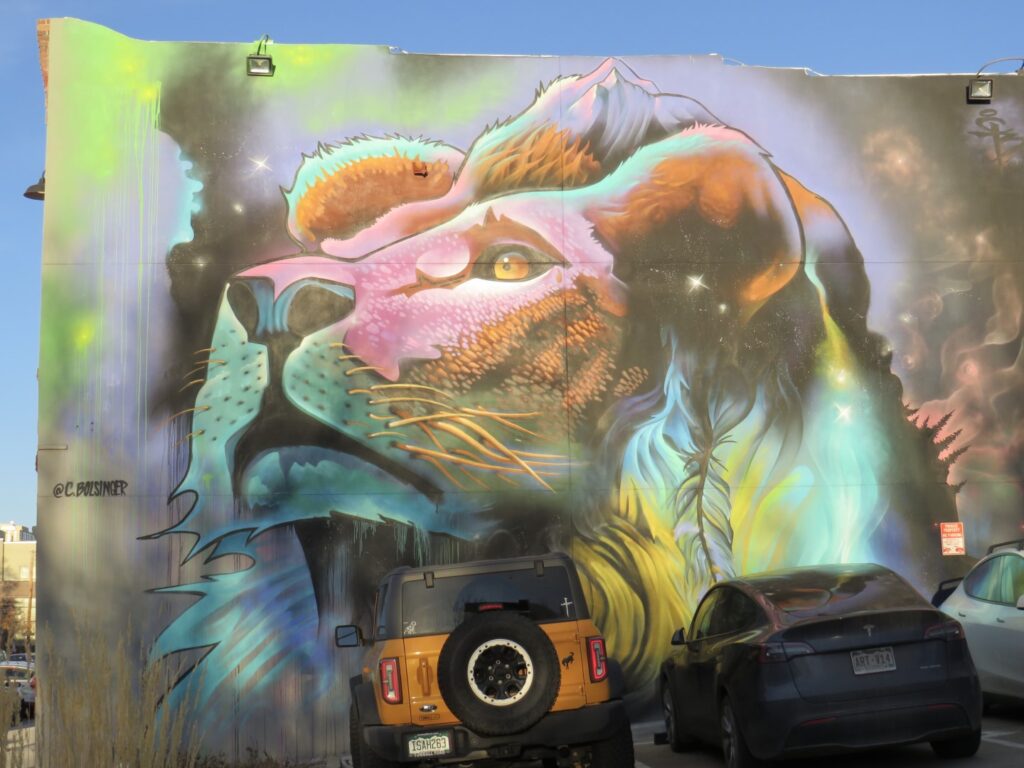
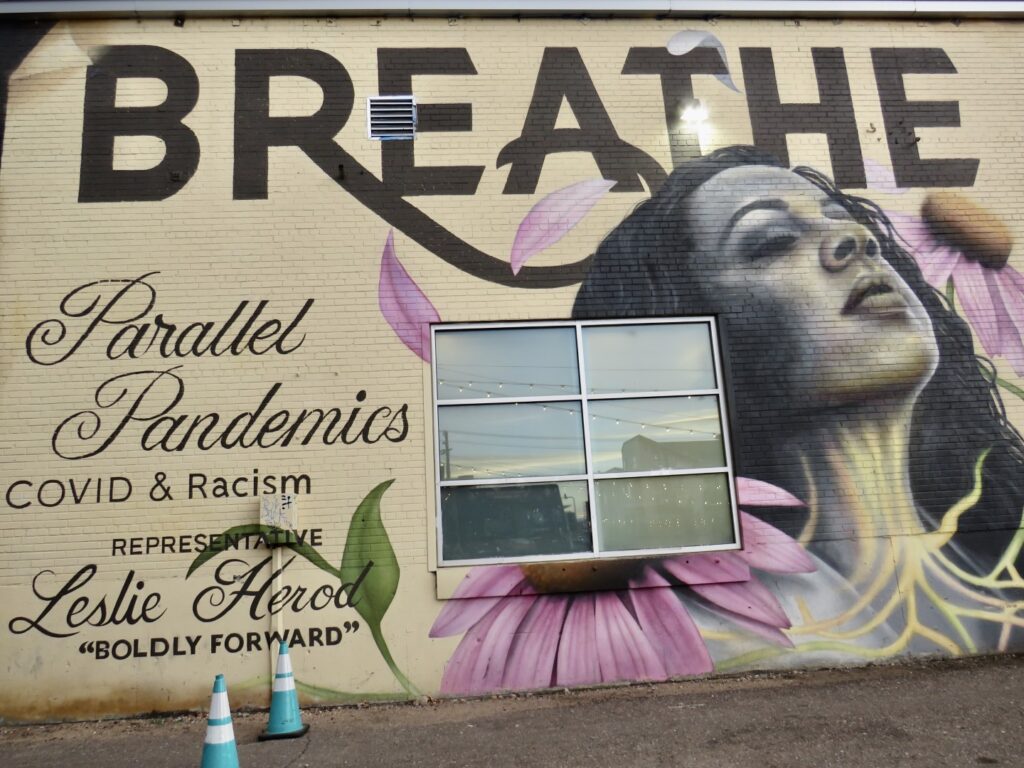
Denver is awash in creative talent, as I could see when I strolled through the RiNo area. Craft breweries, boutiques featuring handmade items, and independently owned restaurants lined the streets. As did eye-popping murals done by local artists.

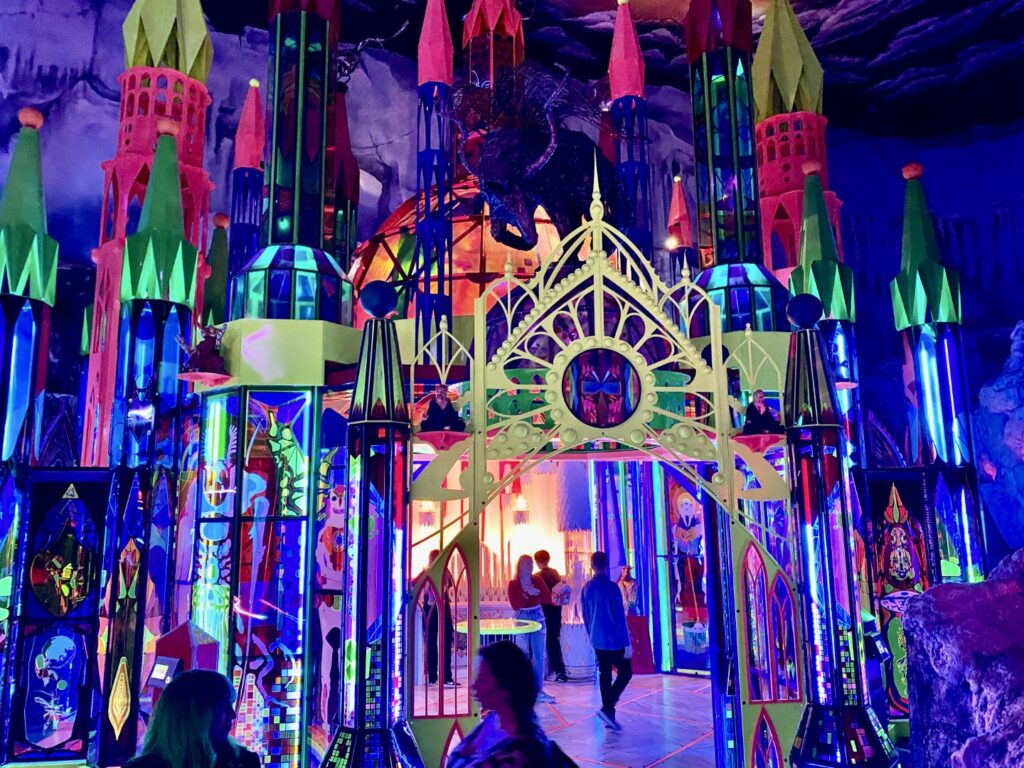
Meow Wolf’s Convergence Station took art to another level. My mind was blown by the worlds created by more than 350 local and international artists over four floors. They call it “a story of multiversal travel through alien worlds.” Walking through the various environments, I felt like Alice in Wonderland. Giant mushrooms, jellyfish-like creatures, and shifting lights caught my attention on one floor, while on another I made my way through a post-apocalyptic downtown filled with burnt-out cars and creepy alleyways. It was extraordinary and dreamlike, and the creative vibe made you follow your own storyline. Convergence Station is the biggest location but you can also find Meow Wolfs in Santa Fe, Las Vegas, Houston, and Grapevine, Texas.
After landing back on earth, I needed a laugh and headed to the Museum of Illusions Denver where Instagram shots of me hanging upside down from buildings (illusions!) brought smiles to my friends back home.
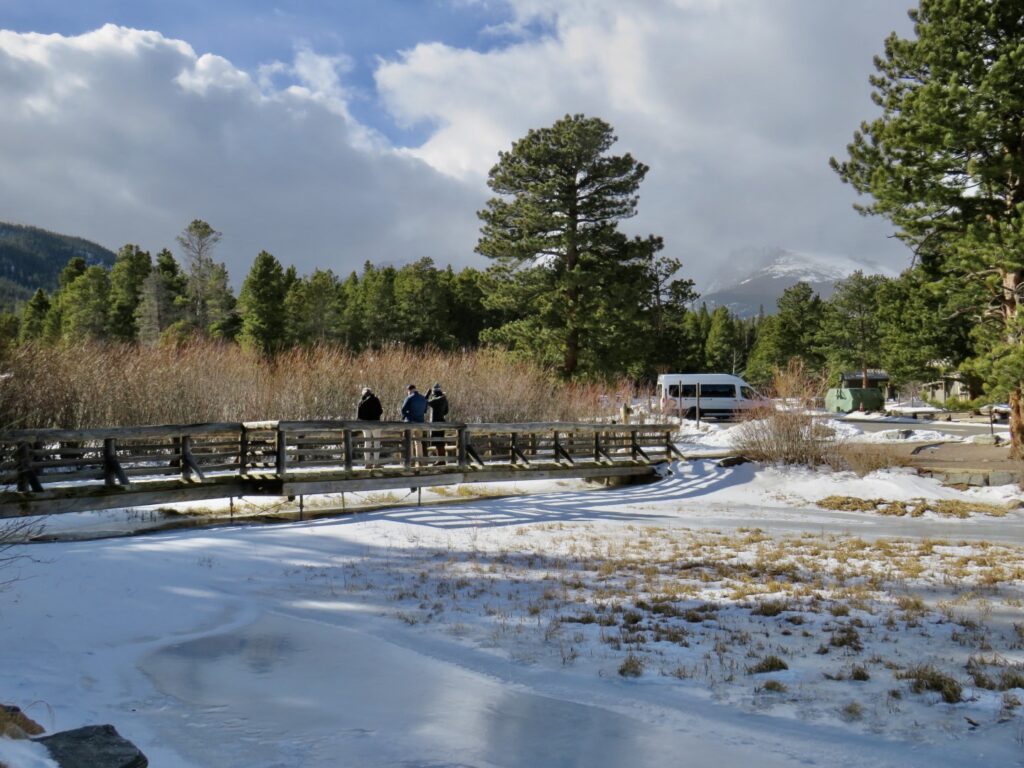
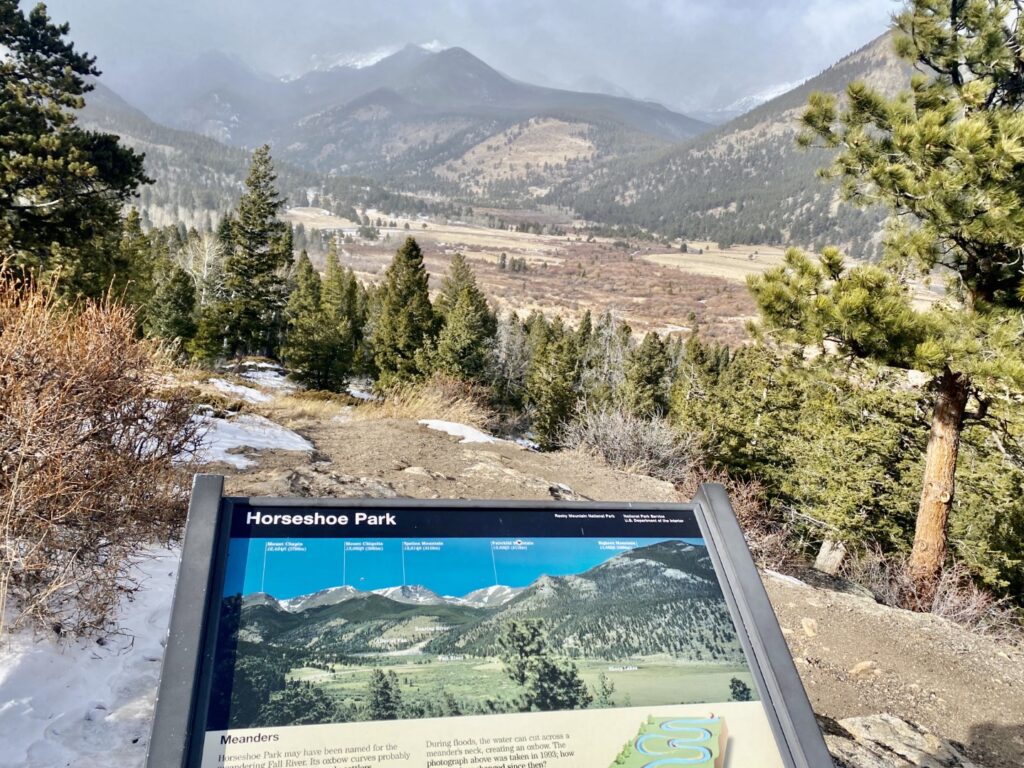
My final outing was to observe creations by the best artist of all, Mother Nature. I booked a Rocky Mountain National Park Tour with Aspire Tours. Guide Dylan Good met the group in front of Denver Union Station and we set off in a small van. He told us the park is 266,000 acres and mostly wilderness. When I spotted a few cottages he explained those homes had been grandfathered in and were mostly seasonal. We also passed Prairie Dogs cavorting between hillocks and kept our eyes open for Big Horn sheep. “They look like moving boulders,” Dylan explained. We didn’t see any of those, but we did spot some elk lounging roadside.
The mountain vistas, forest trails, and alpine lakes were spectacular. One highlight was stepping into the 125-year-old Stanley Hotel, the inspiration for Stephen King’s The Shining. Although the movie wasn’t shot there, King and his wife Tabitha stayed there just as it was closing for the season. The quiet, empty spookiness piqued his imagination. Unlike the hotel in King’s story which is very isolated, The Stanley is located in Estes Park, a lively historic mountain town.
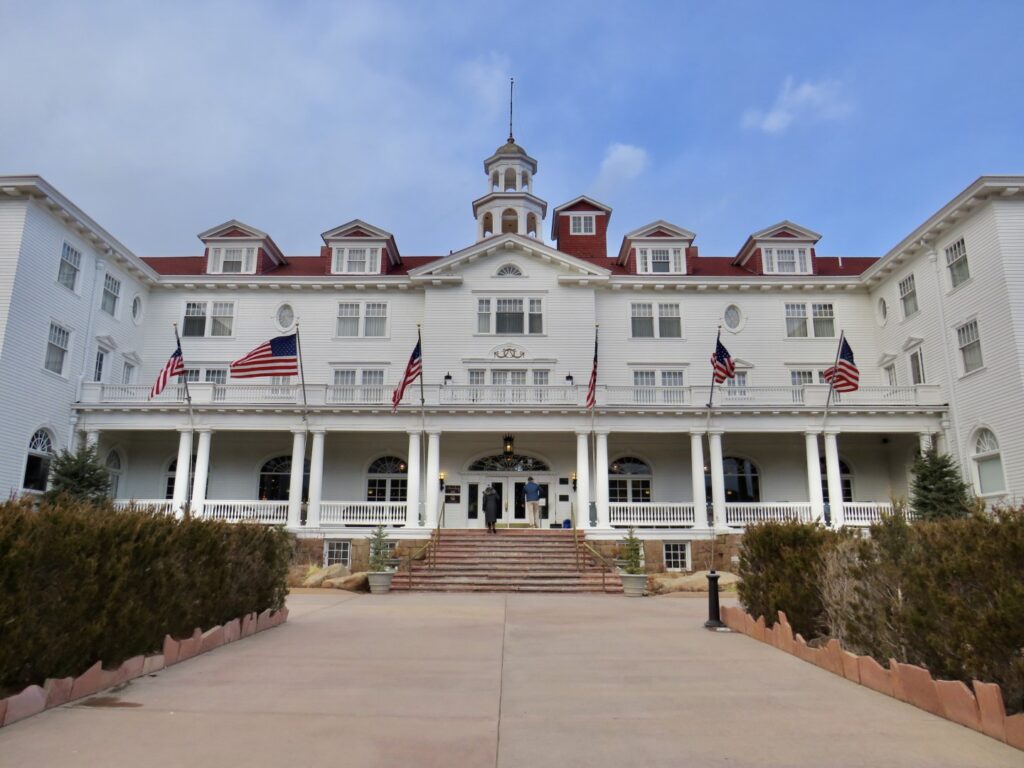
I found the past, present, and future during this trip to Denver. A timeless and magnificent natural backdrop helped put it all into perspective.
Where to Eat
The Ponti at Denver Art Museum – A restful spot to contemplate all you have taken in at the museum’s various exhibits. American bistro with pasta, fish, meat, small bites and creative cocktails.
Brown Palace – Try breakfast at The Palace Arms, where you’ll be surrounded by Napoleonic-era prints and antiques including a pair of dueling pistols that belonged to the little Emperor.
The Greenwich – a little unpretentious NYC-inspired restaurant in Denver’s RiNo district with great pizza and an impressive wine list. Owner Delores Tronco is usually there with her Colorado Mountain Dog, Mr. Charlie.
Toro Latin Kitchen & Lounge – A restaurant with pan-Latin cuisine with South American, Japanese, and Chinese influences. Upscale yet informal, the food is delicious. In the Cherry Creek area of Denver.
Mercantile Dining and Provision – Located in Denver’s Union Station this is James Beard-award-winning Chef Alex Seidel’s second restaurant. Dishes specialize in ingredients from local farms and purveyors. American classic comfort food.
Fire Restaurant & Lounge – Located in The ART, a hotel, this lovely spot next to the Denver Art Museum offers contemporary American dishes. There’s a fabulous outdoor terrace in the summer with high-class firepits.
Where to Stay
Acoma House Hotel: A new, self-serve hotel located a block away from the Denver Art Museum. Each room is unique and designed by local artists.


